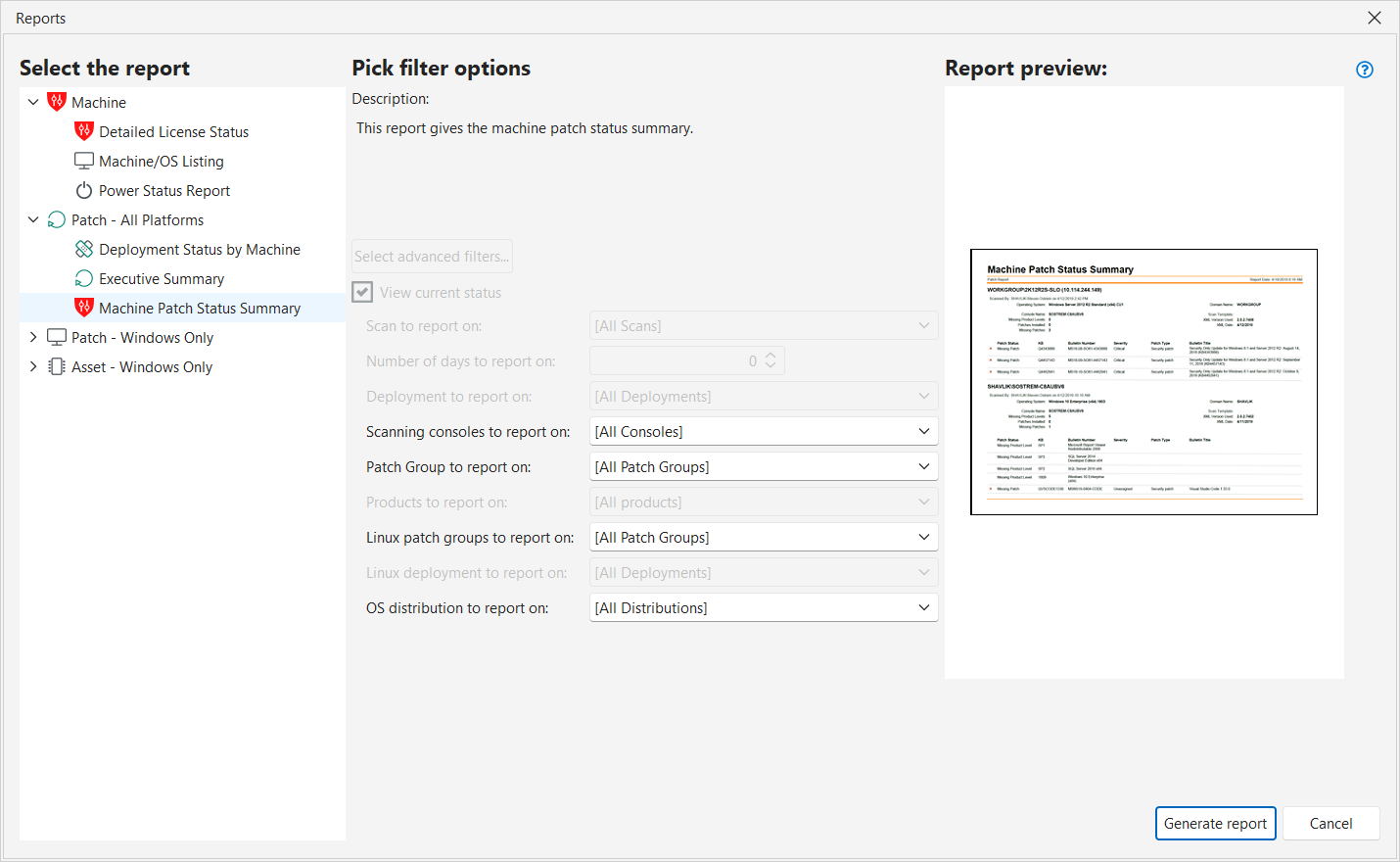Reports Dialog
The Reports dialog is designed to provide you with an assortment of different report filtering options. You can open the Reports dialog using the Tools > Create report menu. The Reports dialog consists of a single dialog in which you make all of your selections.
Select a Report
Use the Select the report list to select which report you want to generate. When you select a report, the description of that report is displayed and a sample of the report is shown on the right side of the dialog.
Pick Filtering Options
Security Controls's reporting utility includes powerful filtering options. Depending on the report you choose, you have choices between basic and/or advanced filtering options.
Basic Filtering Options
- If you want the report to contain information from the most recent scan of each machine managed by the console (and of each machine managed by the associated remote consoles, if this is a data rollup console), enable the View current status check box. Not all reports allow the use of this check box. Enabling this check box will make the Scan to report on option unavailable.
- The basic filtering options allow you to choose which deployments, which scanning databases, which patch groups, and what products would you like to report on.
- Once you have made your selections, click Generate report to see the results.
Advanced Filtering Options
If you need even more granularity or different sorting options, click the Select advanced filters button. The advanced filter options are presented in the Advanced Report Filters dialog. The report will be generated after you specify your advanced filtering options.
Scheduling a Report
If you want to schedule a report to run at some time in the future, select Tools > Schedule report. A scheduled report can be generated once or on a recurring basis. See How to Schedule a Report for more information.
Generating a Report from a Data Rollup Console
If a console is a data rollup console, in addition to containing information about each machine it manages, it will also contain information about all the machines managed by the associated remote consoles. The information sent by the remote consoles and collected by the data rollup console is stored in an aggregate database. When you generate reports from the rollup console you automatically have access to all the information contained in the aggregate database.
